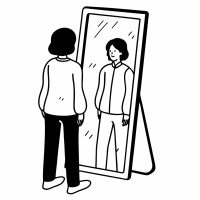
Question More, Action Knowledge.
Remember, at QMAK, we don’t just teach; we empower. We don’t just inform; we inspire. We don’t just question; we act. Become a Gold Member, and let’s unlock your child’s full potential, one question at a time.
![]() Imagine you’re playing a game of chance, like flipping a coin or rolling dice.
Imagine you’re playing a game of chance, like flipping a coin or rolling dice.
You focus intently, willing the outcome to go your way.
And when it does, you feel a surge of satisfaction, as if your mental efforts somehow influenced the result.
But did they really?
Or were you just experiencing the illusion of control?
The illusion of control is a cognitive bias that leads us to overestimate our ability to control events, especially those that are random or uncertain. It’s the belief that we have more influence over outcomes than we actually do, and it can lead us to make poor decisions and underestimate risks.
This illusion stems from our natural desire for predictability and order in the world. We want to believe that we have the power to shape our destinies and avoid negative outcomes. But in reality, many aspects of life are beyond our control, no matter how much we might wish otherwise.
Several other cognitive biases contribute to the illusion of control, including:
![]() 1. Confirmation bias: We tend to seek out and remember information that confirms our existing beliefs, while ignoring or discounting evidence that contradicts them. So if we believe we have control over a situation, we’ll focus on instances that seem to support that belief.
1. Confirmation bias: We tend to seek out and remember information that confirms our existing beliefs, while ignoring or discounting evidence that contradicts them. So if we believe we have control over a situation, we’ll focus on instances that seem to support that belief.
![]() 2. Hindsight bias: After an event occurs, we often believe that we could have predicted it, even though we couldn’t have known for sure at the time. This “knew-it-all-along” effect can reinforce our sense of control, even when it’s not warranted.
2. Hindsight bias: After an event occurs, we often believe that we could have predicted it, even though we couldn’t have known for sure at the time. This “knew-it-all-along” effect can reinforce our sense of control, even when it’s not warranted.
![]() 3. Overconfidence bias: We tend to overestimate our own abilities and underestimate the likelihood of negative outcomes. This can lead us to take on more risk than is prudent, believing that we have the skills to handle any challenges that arise.
3. Overconfidence bias: We tend to overestimate our own abilities and underestimate the likelihood of negative outcomes. This can lead us to take on more risk than is prudent, believing that we have the skills to handle any challenges that arise.
While a little bit of perceived control can be comforting, the illusion of control can have serious consequences when taken too far.
![]()
Investors may overestimate their ability to predict market fluctuations, leading them to make overly risky decisions with their money. They may believe they have a “golden touch” when in reality, their success is largely due to chance.
![]() Individuals may underestimate the risks of certain behaviors, such as smoking or excessive drinking, because they believe they can control the outcomes. They may think, “I can quit anytime” or “I know my limits,” when in fact, they’re putting their health in jeopardy.
Individuals may underestimate the risks of certain behaviors, such as smoking or excessive drinking, because they believe they can control the outcomes. They may think, “I can quit anytime” or “I know my limits,” when in fact, they’re putting their health in jeopardy.
![]() Athletes or performers may overestimate their chances of success, leading to crushing disappointment when things don’t go as planned. They may attribute failures to external factors rather than recognizing the role of chance or the skills of their opponents.
Athletes or performers may overestimate their chances of success, leading to crushing disappointment when things don’t go as planned. They may attribute failures to external factors rather than recognizing the role of chance or the skills of their opponents.
So how can we overcome the illusion of control and make more realistic assessments of our influence?
Here are some strategies:

Simply being aware that you’re susceptible to this bias can help you question your assumptions and look at situations more objectively.

When making decisions, look for hard data and evidence to support your choices, rather than relying solely on your gut instincts or past experiences.

Talk to people with different viewpoints and experiences to gain a more balanced understanding of a situation. They may point out factors you hadn’t considered.

When things don’t go as planned, resist the urge to blame external factors or chalk it up to bad luck. Instead, look for lessons you can learn and ways you can improve your decision-making in the future.

Accept that some things are simply beyond your control, no matter how much you might wish otherwise. Focus on what you can influence, and let go of what you can’t.
Helping children understand the illusion of control can set them up for more realistic expectations and resilience in the face of setbacks.
Here are some ways to introduce the concept:
Use age-appropriate examples: Talk about games of chance or situations where outcomes are determined by factors beyond their control. Help them see the difference between what they can and can’t influence.
Conduct experiments: Set up simple demonstrations of randomness, like flipping a coin or drawing cards from a deck. Show them how their predictions or wishes don’t actually affect the results.
Discuss biases: Introduce the concept of cognitive biases and how they can distort our thinking. Help kids recognize when their own biases might be leading them astray.
Encourage critical thinking: Challenge kids to question their assumptions and look for evidence to support their beliefs. Teach them to be open to different viewpoints and to change their minds when presented with new information.
Model realistic expectations: Avoid setting unrealistic standards or putting too much pressure on kids to succeed. Help them see that failure and uncertainty are normal parts of life, and that what matters most is how they respond to challenges.
While the illusion of control can lead us astray, it can also be harnessed for positive purposes.
Here are some ways to use it to your advantage:
Ultimately, the illusion of control is a double-edged sword. While it can lead us to take foolish risks or blame ourselves for things beyond our influence, it can also be a source of motivation and resilience. By recognizing its power and using it wisely, we can harness the illusion of control to achieve our goals and navigate life’s uncertainties with greater confidence and grace.
Objective: To demonstrate that outcomes can be random and beyond our control.
Objective: To differentiate between situations where we have control and those where we don’t.
Objective: To recognize that control exists on a spectrum, and to identify areas where we have more or less influence.
Objective: To identify and analyze cognitive biases that contribute to the illusion of control.
Objective: To practice setting realistic goals and focusing on controllable factors.
The Truman Show provides a fascinating lens through which to examine our tendency to overestimate our control over life’s circumstances.
Through Truman Burbank’s journey from blissful ignorance to shocking awareness, students witness how our perceived sense of control can be dramatically different from reality.
The film’s artificial world of Seahaven serves as a perfect metaphor for how external factors – from social pressures to institutional systems – shape our choices while maintaining our illusion of complete autonomy. As Truman begins to notice the cracks in his manufactured reality, students can reflect on their own assumptions about personal control in their lives.
The film’s gradual revelation of how Christof orchestrates every aspect of Truman’s existence, from the weather to his relationships, provides a powerful framework for discussing how we often maintain the illusion of control even when faced with evidence to the contrary.
This exploration challenges students to examine their own beliefs about free will and decision-making in their daily lives.
(Verse 1)
We flip a coin, we roll the dice
Believing we can influence the skies
But the illusion of control is a trick of the mind
Making us think we can leave chance behind
(Chorus)
The illusion of control, it’s a powerful force
Making us believe we can steer our own course
But in reality, there’s so much we can’t foresee
The illusion of control, it’s a cognitive debris
(Verse 2)
Confirmation bias, hindsight too
Overconfidence in what we do
These biases fuel the illusion’s flame
Making us think we’re in charge of the game
(Bridge)
But the consequences can be grave
When we think we’re the master, not the slave
Risky investments, unhealthy choices
Unrealistic expectations, ignoring other voices
(Chorus)
The illusion of control, it’s a powerful force
Making us believe we can steer our own course
But in reality, there’s so much we can’t foresee
The illusion of control, it’s a cognitive debris
(Verse 3)
To burst the bubble, we must seek
Evidence and data, not just what we think
Consider other views, embrace uncertainty
Learn from our mistakes, let go of what we can’t see
(Bridge)
Teach the kids, through examples clear
Experiments and critical thinking, year by year
Model realistic expectations, set achievable goals
Focus on what you can control, let the rest go
(Chorus)
The illusion of control, it’s a powerful force
Making us believe we can steer our own course
But in reality, there’s so much we can’t foresee
The illusion of control, it’s a cognitive debris
(Outro)
Harness the illusion for motivation and drive
But remember its limits, keep your perspective alive
The illusion of control, a double-edged sword
Wield it wisely, and you’ll never be bored!

Remember, at QMAK, we don’t just teach; we empower. We don’t just inform; we inspire. We don’t just question; we act. Become a Gold Member, and let’s unlock your child’s full potential, one question at a time.